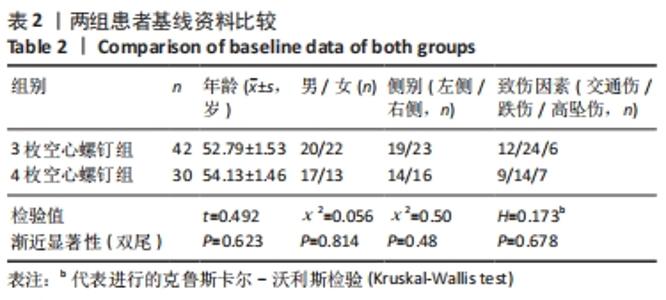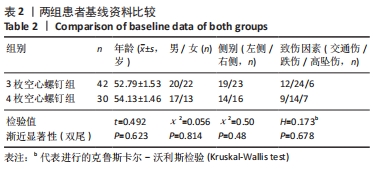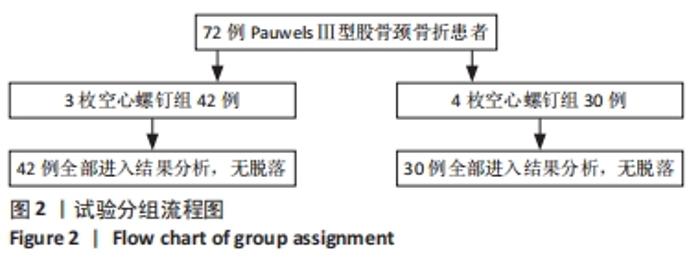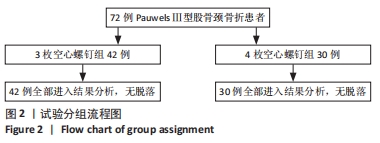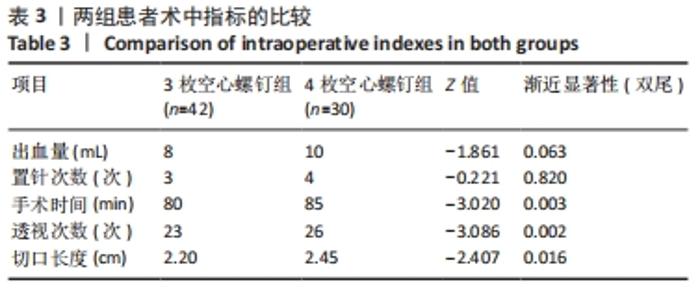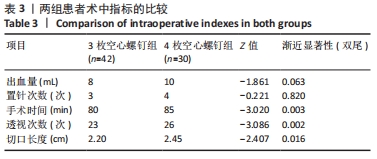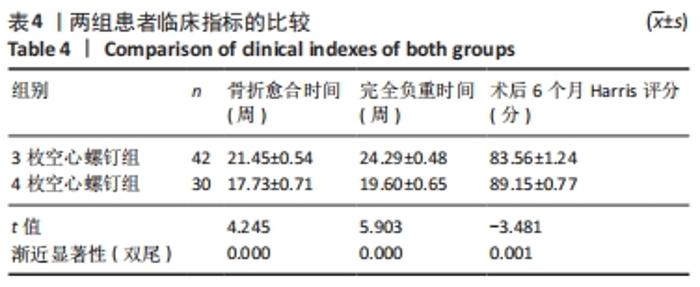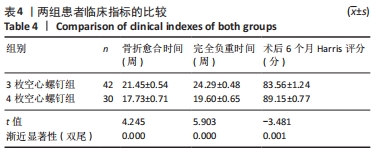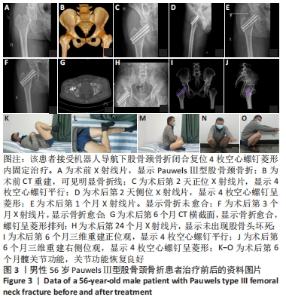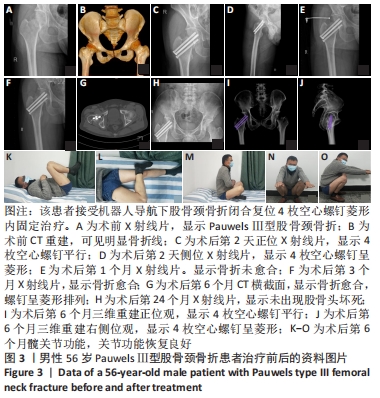[1] 国家统计局.中华人民共和国2019年国民经济和社会发展统计公报[1][N].人民日报,2020-02-29(005).http://www.yunfu.gov.cn/yftjj/gkmlpt/content/1/1299/post_1299760.html
[2] VERONESE N, MAGGI S. Epidemiology and social costs of hip fracture. Injury. 2018;49(8):1458-1460.
[3] BARTONÍCEK J. Pauwels’ classification of femoral neck fractures: correct interpretation of the original. J Orthop Trauma. 2001;15(5):358-360.
[4] FLORSCHUTZ AV, LANGFORD JR, HAIDUKEWYCH GJ, et al. Femoral neck fractures: current management. J Orthop Trauma. 2015;29(3):121-129.
[5] 张长青,张英泽,余斌,等.成人股骨颈骨折诊治指南[J].中华创伤骨科杂志, 2018,20(11):921-928.
[6] DUAN SJ, LIU HS, WU WC, et al. Robot-assisted Percutaneous Cannulated Screw Fixation of Femoral Neck Fractures: Preliminary Clinical Results. Orthop Surg. 2019;11(1):34-41.
[7] 沈佳祚,练克俭.青壮年股骨颈骨折手术治疗的研究进展[J].实用骨科杂志, 2013,19(8):727-729.
[8] HICKMAN JG, TINDALL JP, MCCOLLUM DE. Aseptic (avascular) necrosis of the femoral head in psoriasis. South Med J. 1979;72(2):121-126.
[9] XU JL, LIANG ZR, XIONG BL, et al. Risk factors associated with osteonecrosis of femoral head after internal fixation of femoral neck fracture:a systematic review and meta-analysis. BMC Musculoskelet Disord. 2019;20(1):632.
[10] KALHOR M, BECK M, HUFF TW, et al. Capsular and pericapsular contributions to acetabular and femoral head perfusion. J Bone Joint Surg Am. 2009;91(2):409-418.
[11] ZHOU L, LIN J, HUANG A, et al. Modified cannulated screw fixation in the treatment of Pauwels type III femoral neck fractures: A biomechanical study. Clin Biomech (Bristol, Avon). 2020;74:103-110.
[12] PATHROT D, UL HAQ R, AGGARWAL AN, et al. Assessment of the geometry of proximal femur for short cephalomedullary nail placement: An observational study in dry femora and living subjects. Indian J Orthop. 2016;50(3):269-276.
[13] ZWINGMANN J, HAUSCHILD O, BODE G, et al. Malposition and revision rates of different imaging modalities for percutaneous iliosacral screw fixation following pelvic fractures: a systematic review and meta-analysis. Arch Orthop Trauma Surg. 2013;133(9):1257-1265.
[14] 周力,王豫.双平面骨科机器人系统辅助股骨颈骨折内固定的实验研究[J].中华创伤骨科杂志,2009,11(2):147-151.
[15] HE M, HAN W, ZHAO CP, et al. Evaluation of a Bi-Planar Robot Navigation System for Insertion of Cannulated Screws in Femoral Neck Fractures. Orthop Surg. 2019;11(3):373-379.
[16] STOFFEL K, ZDERIC I, GRAS F, et al. Biomechanical Evaluation of the Femoral Neck System in Unstable Pauwels III Femoral Neck Fractures: A Comparison with the Dynamic Hip Screw and Cannulated Screws. J Orthop Trauma. 2017;31(3):131-137.
[17] MANSUR H, ALVAREZ R, FREITAS A, et al. BIOMECHANICAL ANALYSIS OF FEMORAL NECK FRACTURE FIXATION IN SYNTHETIC BONE. Acta Ortop Bras. 2018;26(3): 162-165.
[18] KAUFFMAN JI, SIMON JA, KUMMER FJ, et al. Internal fixation of femoral neck fractures with posterior comminution: a biomechanical study. J Orthop Trauma. 1999;13(3):155-159.
[19] 程培焱.不同数量和排列方式的空心拉力螺钉治疗股骨颈骨折的有限元分析[D].石家庄:河北医科大学,2017.
[20] CLAES L, RECKNAGEL S, IGNATIUS A. Fracture healing under healthy and inflammatory conditions. Nat Rev Rheumatol. 2012;8(3):133-143.
|
